Ecommerce SEO Strategy: How to Boost Organic Traffic the Right Way

Growing a direct-to-consumer (DTC) brand is no small feat. And to make matters worse: the playbooks proven to work over the past decade are becoming redundant.
The old playbook was to build a brand identity, then spend millions on Facebook advertising—a strategy that is now outdated.
You need to up your game with ecommerce search engine optimization (SEO), returning to it in earnest as a marketing strategy.
If you aren’t totally in the know about your store’s SEO or simply aren’t sure what the best avenues are for driving results in the SERP, this post has you covered.
We’ll share actionable ecommerce SEO best practices to prioritize today—so you show up on the results page for relevant product searches tomorrow.
We’ll cover:
#cta-visual-pb#<cta-title>Build a gorgeous store optimized for search<cta-title>DIY your store design with the best page builder by creating stunning store pages and landing pages that drive conversions and drive organic traffic.Start building for free
What is ecommerce SEO?
Ecommerce SEO is the process of optimizing an online store to increase its chances of ranking in a search engine for customers’ keywords.
An ecommerce SEO strategy includes on-page and off-page tactics—both of which come together and prove to search engine algorithms that your online store is the best result for a user’s query.
What are the benefits of focusing on your ecommerce SEO?
The major advantage of ecommerce SEO is visibility, which translates to more traffic, more conversions, and increased revenue.
By appearing in potential customers’ search results, you make an entrance to their customer journey when they’re impressionable.
Drive them toward your website, and you’ve done the hardest part: driving qualified traffic toward your ecommerce site.
Not convinced to invest in ecommerce SEO? Consider this data:
- People collectively search for something on Google 3.5 billion times per day
- Almost half of people start their product search on a search engine
- Marketers voted content marketing and SEO as the channel that provides the highest ROI
Ilana Davis, creator of JSON LD for SEO, adds, “When your product, its rating, prices, and stock availability are all shown in the organic results, your visitor is going to be primed to buy.
“They don’t need to comparison shop because you’ve already told them the price,” Ilana says.
“They already see what other customers think about your product, so they don’t need to research your company as much. They’re coming to your store just to click the ‘add to cart’ button and buy. That’s the best kind of traffic you can get.”
Where in the SERP are you able to show up these days?
Search engines have evolved dramatically since the standard 10-link results pages from the turn of the century.
There are now several places your ecommerce business can appear in the results page, including:
- Organic results. These are the standard blue links that appear in a search engine results page. The higher you can appear here, the better. Searchers are 10 times more likely to click the result in position one, compared to position 10—even though they’re on the same page.
- “People also ask” boxes. Almost 65% of all Google searches are zero-click, with the majority finding the answer to their question on the SERP itself. “People also ask” boxes are one way Google tries to cater to these zero-click searches. Format content in short paragraphs, bullet points, or numbered lists to claim these spots. Although shoppers may not click your result, they’ll likely remember how your brand supported them through their customer journey.
- Product and video carousels. Cater to potential customers who prefer to absorb information through images or video with in-SERP carousels. Google, for example, pulls video content from YouTube (which it also owns), allowing you to reach potential customers using two search engines from the same content.
- Knowledge panels. A knowledge panel is a box of information that appears in the SERP for popular people, places, or businesses. Claim your knowledge panel and make it easier for potential shoppers to find your website, reviews, and social media profiles.
- Local pack. If you operate an ecommerce store alongside physical locations, a well-optimized Google Business listing will appear in the local pack results for searches like “bicycle store near me.”

Is there an ecommerce platform you should choose for the best possible SEO?
Legend states that each ecommerce platform has different SEO elements, and therefore, impacts your chances of ranking. That includes:
“Though Shopify has some SEO limitations straight out of the box, it’s improved greatly in the past few years. I like Shopify because it’s easier for clients to use and understand, has thousands of easy-to-use apps, and is a constantly evolving platform that the world’s top brands use.”
— Kai Cromwell, founder of New Seas
However, Anthony Bautista, founder of Pure CBD Now, adds, “It’s important to note that the platform itself is not as important as the way it’s set up and the SEO best practices that are followed.
“As long as the platform allows for things like customizable URLs, proper header tags, and the ability to add alt tags to images, it should be sufficient for SEO.”
Components of a successful ecommerce SEO strategy
Marketers have experimented with different ecommerce SEO tactics for years—from the shady guest posting strategies of 2010 to the infamous skyscraper technique.
Each plays on a wider ecommerce SEO strategy.
Whether you’re a small team with few people in your ecommerce department or have the support of a dedicated in-house team, here are the components of a successful SEO strategy that you should prioritize for best impact.
Targeted keyword research
Keywords are the words and phrases your target audience searches for.
By targeting these keywords in the right place on your ecommerce store (more on that later), you’ll prove to search engines that your website is relevant to their query and, therefore, appear in search results.
However, not just any keyword is a good keyword. Just because 100,000 people search for a given phrase each month, it doesn’t mean you should target it, too.
For maximum impact, prioritize keywords that hit one or more of these criteria:
- Long-tail keywords related to your product catalog, such as “best sneakers for women”
- Low search volume keywords with direct product overlap, such as “women’s new balance 530 sneakers size 10.” (These are more common than you might think: almost 85% of all keywords get fewer than 10 searches per month.)
- Branded search terms that include your store name, such as “SneakerStore New Balance sneakers”
Many fall into the trap of targeting high volume—and therefore, high competition—keywords.
Only megabrands with incredible legacies and brand recognition, such as Nike and Adidas, rank for the word “sneakers.” Competing against those brands is an almost-impossible and expensive task.
By switching your ecommerce SEO strategy and focusing on low-hanging fruit, you’ll rank for long-tail keywords with greater product attachment.
It’s those visitors most likely to convert when they visit your online store.

High-quality content
Search engines use content to understand the context of a webpage. Algorithms are complex (with over 200 ranking factors), but it largely boils down to this:
Sites that answer a user’s query are more likely to appear higher in the search engine.
As part of your ecommerce SEO strategy, produce high-quality content that provides the best answer to your potential customers’ questions.
“Knowing what keywords people are searching for related to your products can help you create content and titles that will rank well in search results.”
— David Zhang, CEO of Kate Backdrop
Using the same keyword example above, let’s break down how we might create content around the keywords on our “to target” list:
- “Best sneakers for women”: Blog post with this keyword in the title which breaks down your best-selling women’s sneakers. The content includes the brand name and style of sneaker in heading tags, with images, customer reviews, and user-generated content to sell each sneaker.
- “Women’s New Balance 530 sneakers size 10”: Product page for this sneaker style with the keyword in the product name, description, image alt text, and customer reviews.
- “SneakerStore New Balance sneakers”: Category page which showcases this brand of sneaker. The keyword is included in the meta title, title tag, and category description.
Take Majesty Coffee, for example. The CPG brand ranks in position one—the featured snippet—for the keyword “best coffee beans for cappuccino.”

On this ranked page, potential customers get the answers to their questions and product recommendations, satisfying user intent and reinforcing to the search engine that it should be ranked highly.
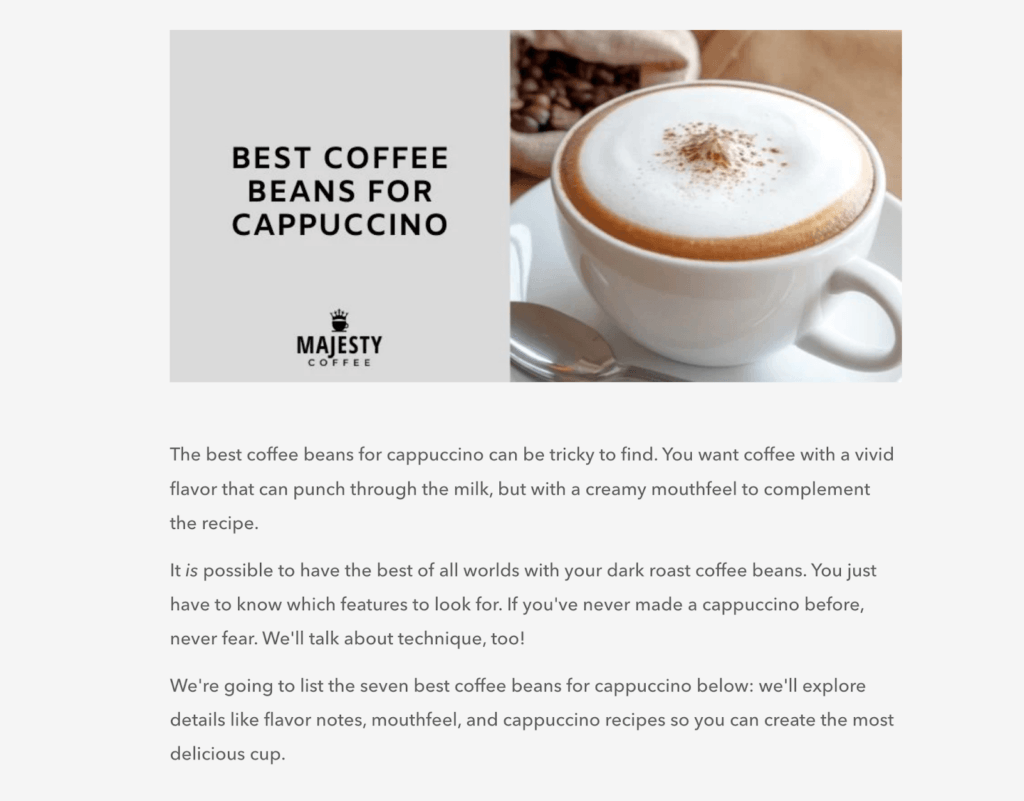
Pro tip: Use content marketing and SEO tools (like Clearscope or SurferSEO) for extra help optimizing on-page content. Both tools use artificial intelligence to pull similar keywords, helping you prove to search engines you cover the topic comprehensively.
Site architecture
Think of your site’s architecture as the skeleton of your website. It’s a map that guides both search crawlers and human users around your store.
The easier it is to find content on your online store, the better the user experience, and the quicker a search engine can discover content on your website.
As a result, search engines reward ecommerce stores that have simple architecture with greater rankings.
“Users will look elsewhere if they have difficulty navigating your site, finding the information they need in your categories, or aren’t interested in your brand within that window of time.
As a result, optimizing your site’s navigation and structure is vital not just for search engine rankings but also for the satisfaction of your visitors.”
— Daniel Foley, SEO consultant
Important things to consider when optimizing your site architecture include:
- Optimized ecommerce navigation. From your top navigation bar to breadcrumb navigation, make it easy for both visitors and crawlers to navigate your website.
- Sitemap. Create an XML sitemap and submit it to Google through your Google Search Console account. You’ll see how many URLs have been indexed by Google and are, therefore, visible in SERPs.
- Short vs. deep links. Short links are easy to find from your homepage; deep links are the opposite. Aim for fewer than four steps between someone landing on your website and finding the thing they’re looking for. (For example, home page > category page > product page.)
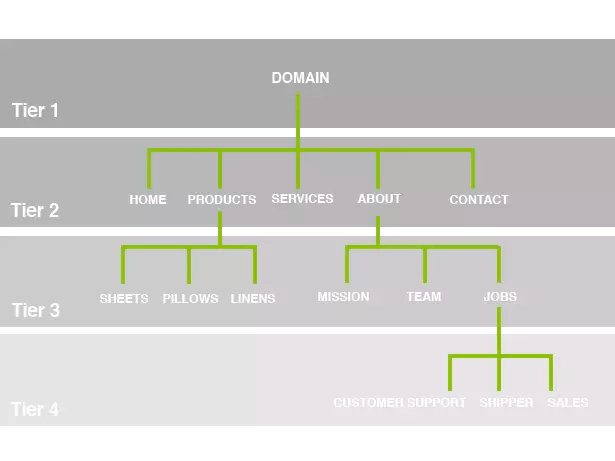
Link building
Links are a core component of any ecommerce SEO strategy. We can break them down into two buckets: internal and external links.
External links, also known as backlinks, are links from another website that point toward yours.
They’re extremely important for ecommerce SEO—Ahrefs found the more backlinks a page has, the more organic traffic it gets from Google.
Why? Because backlinks act as a seal of approval.
If another website links to your website from theirs, it must be providing value. Backlinks also help search engines crawl new pages.
We can see this in action with Daring Foods, a DTC brand that’s built an impressive backlink profile. Its website has backlinks from high Domain Authority (DA) websites like Bon Appetit and Taste of Home.
Notice how the anchor text matches the main keyword of the page it’s linking to, giving search engines more context on what the page discusses (and what it should rank for).
The backlinks come from relevant sites in Daring Food’s niche, too, building topical authority and securing endorsements from related websites.

Internal links are the other half of the link-building equation. These are links you have more control over; you can write the anchor text and determine the pages you interlink.
These links help Google crawl your site in a topically relevant way and shorten click paths for shoppers for related content and products.
In Daring Foods’ case, they’ve internally linked their recipe pages (i.e., blog content) and product pages.
Each uses the exact product name someone would Google, “Original Daring Pieces,” to improve the algorithm’s connection between the keyword and product page.
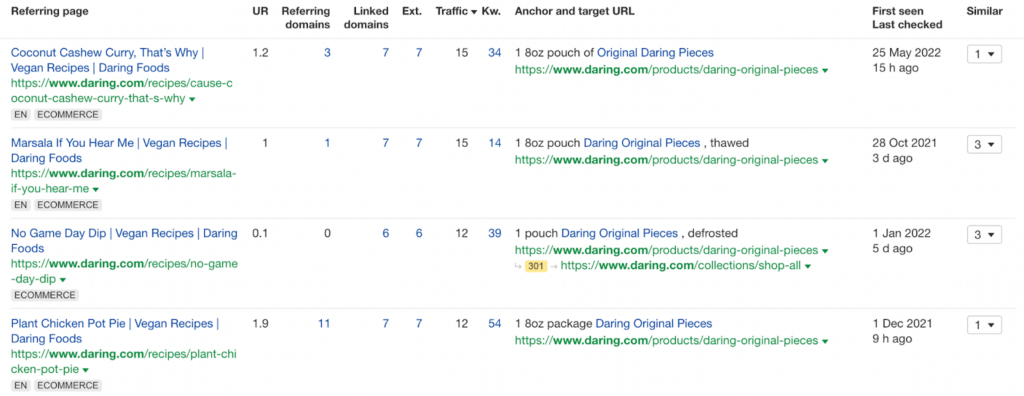
User experience
A search engine’s main goal is to divert searchers toward the best website for their query.
If people land on a website with a poor user experience, there’s a strong chance they’ll head back to the SERP.
The algorithm learns that your URL didn’t meet a searcher’s goal and will prioritize one that did.
Provide a superb user experience to enhance your ecommerce SEO strategy by:
- Satisfying user intent. User intent refers to the goal a person tries to complete when they search. By meeting the intent for each keyword, searchers will view your page without needing to return to the results page. You’ll increase dwell time and reduce bounce rate—two known ranking factors.
- Decreasing page load speed. You no longer need to choose between a strong user experience and site speed. With a progressive web app (PWA), you can create stunning, creative shopping experiences—including rich dynamic product features and user-generated content—without compromising on page load speed.
- Making your website mobile-friendly. Experts predict that by 2025, more than half of ecommerce sales will happen by mobile. Another 35% of mobile users use their device to search for local businesses multiple times per week. Implement a mobile SEO strategy that includes a responsive theme, fast loading speeds, vertical images, and limiting redirects.
#cta-visual-pb#<cta-title>Design SEO-friendly pages in a flash<cta-title>Drive more organic traffic and boost conversions by using Shogun Page Builder to quickly create store content optimized for search and mobile.Start building for free
12 Ecommerce SEO best practices to grow traffic
We know the components involved in an ecommerce SEO strategy. But how can you hit each checkbox using minimal resources for maximum impact?
Here is an ecommerce SEO checklist to follow for each type of search optimization.
Technical SEO for ecommerce stores
Technical SEO is the process of optimizing the technical aspects of your website—such as its architecture, linking strategy, and user experience—to improve rankings.
Quick technical SEO wins for ecommerce stores include:
- Page speed. Most people will leave a website if it doesn’t load within six seconds. Meet these expectations—and prove to search engines that you provide a strong user experience—by improving your site speed. Compress images, minify excess code, and enable browser caching. Use Google’s PageSpeed Insights to benchmark page load times.
- 404 errors. URLs are removed from a website for various reasons. Whether you no longer sell the product or you’ve released a better version, these 404 errors provide a bad user experience—the equivalent of a dead end. Find your broken links and use a tool like Ahrefs to automatically redirect people landing there toward the next-most relevant page.
- Migration. Things can easily go wrong when you’re migrating or replatforming your ecommerce site, from lower rankings to a drop in authority. Retain your SEO efforts by making a test site, producing a sitemap, and creating redirects to continue friction-free experiences for shoppers.
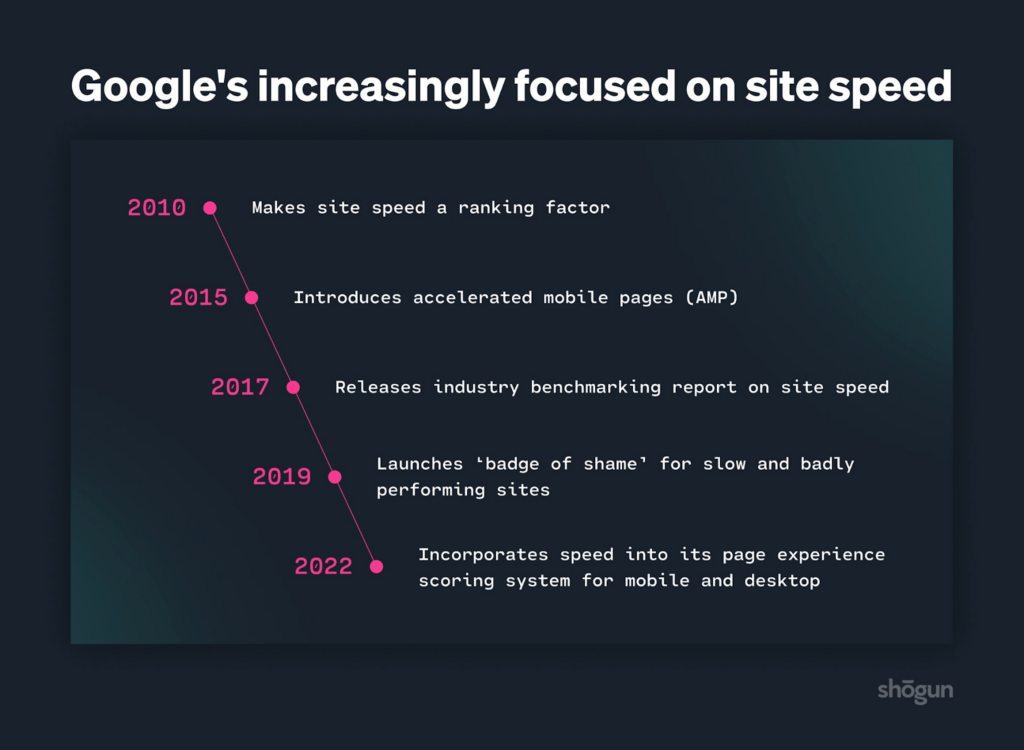
TULA is a skincare brand that optimized its site speed—and, therefore, its SEO rankings—with a headless architecture.
TULA used Shogun Frontend to deliver an incredible shopping experience with dynamic merchandising like user-generated content and product recommendations.
“Speed is incredibly important and is one of the biggest reasons we have gone headless,” said TULA’s CEO, Savannah Sachs.
“By building our own frontend, we can really optimize speed and the shopping experience. How quickly your website loads, and how fast your customer can navigate through it, is a huge determinant of performance.”
On-page SEO for product pages
On-page SEO refers to the optimization of single pages on your website.
Pay attention to these elements to optimize product pages and increase rankings for your money pages:
- URL paths. Backlinko found short URLs tend to outrank longer strings. Keep yours short and simple, stating just the page’s main keyword with a hyphen to replace the natural space. Grenade, for example, uses the URL path /products/protein-bar-chocolate-salted-caramel for its salted caramel protein bar product page.
- Product descriptions. An important part of sales copy, the product description describes what the item is and why people should buy it. Optimize product descriptions by including the target and supplementary keywords throughout. If you’re optimizing the product page of a moisturizer, for example, use phrases like “oily skin”, “skincare routine,” or “breakouts.”
- Image optimization. Optimizing product images enhances your visibility in photo-focused search engines like Google Images. For the best chance of success, compress your images using a tool like TinyPNG. Write descriptive alt text using the search-specific keywords a customer would use to find your product.
- Title tag. The title tag is the blue text that appears for each result in a search engine. While it’s not high on an algorithm’s priority list when evaluating a product page for ranking factors, including the page’s most relevant keyword can influence rankings.
- Meta description. The meta description is the text beneath your title tag in SERPs. Your goal here is to convince searchers to click your result over another. Click-through rate (CTR) is a known ranking factor that can bump your result up a few spots.
- Schema markup. Schema is a type of structured data that helps search engines better understand the content on your page. Use the Schema Markup Generator to showcase product reviews, price, availability, returns policy, and price drops directly within the SERP.
“Google has been showing images alongside search results and is now doing video as well. By using unique product images as opposed to stock images like our competitors, we not only get a lot of these images in search, but it really helps you stand out from other results.”
— John Frigo, ecommerce manager at Best Price Nutrition
Reggie is a pet DTC brand that puts this on-page SEO strategy into practice.
Its founder and CEO, Josh Weiss, explains, “Thoughtful product descriptions that provide helpful information can help your products rank higher in search engine results.
“For example, our product page greets visitors with brief synopses stating how each of our vitamin supplements benefits dogs.
Clicking a ‘SHOP NOW’ CTA takes shoppers to an individual product page with graphics listing what that supplement targets, its suggested daily use, what they’re made of, and the benefits of those ingredients.”

Josh adds that Reggie improves user experience with “An easy-to-understand feeding guide that makes no bones about the best daily amount for each dog size.”
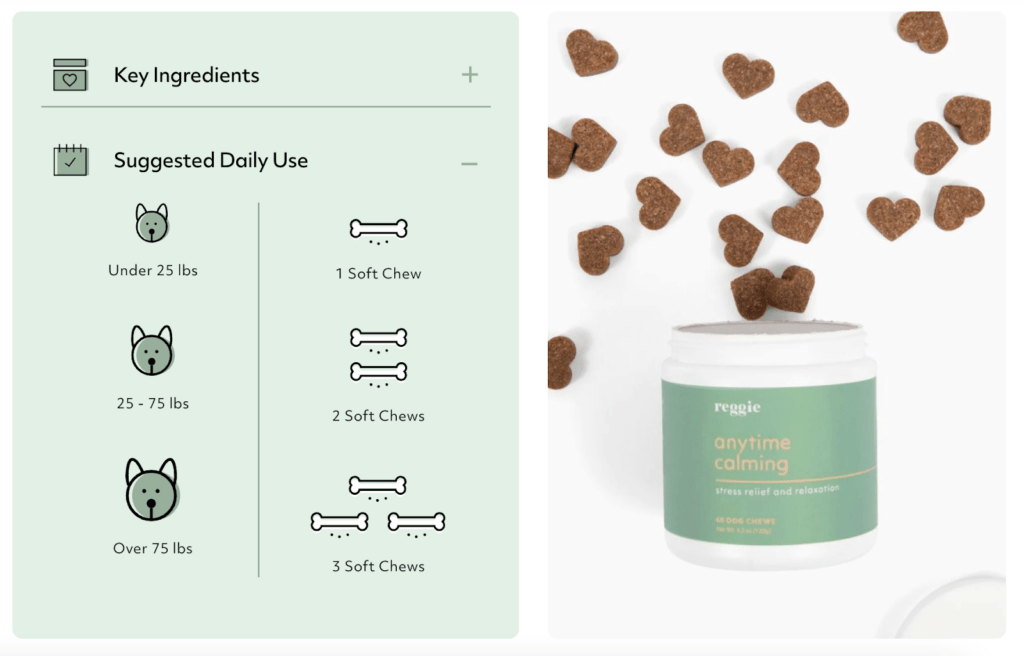
The cherry on the cake of Reggie’s product page SEO strategy is the meta tags it uses to greet potential customers in the search engine.
Its page title is the keyword someone interested in its products would likely search: “calming chews for dogs.”
And, to convince people to click Reggie’s result over a competitor, the brand describes the benefits of its calming chews and its 4.8-star rating.
Both elements act as microcopy that improves the page’s organic click-through rate.
“Product Review Schema can allow standard product pages to become more visually appealing [in search results] via the addition of star rating and further product information (such as whether it’s in stock or not).”
— James Taylor, SEO consultant

Pro tip: Need help optimizing on-site content at scale? Use Page Builder Advanced to make bulk changes at scale and sync content across multiple stores.
Ecommerce SEO best practices for collections or category pages
Category pages are amongst the most frequently visited pages on your website since they help shoppers discover the products they’re most interested in.
Optimize each product category page by:
- Targeting long-tail keywords. Category or collection pages aren’t as specific as individual product pages. Use them to target long-tail keywords a person in the middle of the marketing funnel might search for, such as “skincare for oily skin” or “beard oils for wiry hair.”
- Considering category structure. When creating subcategories for long-tail keywords, consider the architecture of your website. Place subcategories beneath the most relevant overarching category to improve topical authority. For example, the “skincare for oily skin” subcategory might fall beneath a generic “skincare” category.
- Building backlinks. It’s easier to manage backlinks to a category page than a product page since the latter has a higher chance of being removed from your ecommerce store. Use strategies like guest posting, influencer reviews, and press coverage to build backlinks to collection pages with anchor text that reflects the category.
Briogeo Hair puts each of these category SEO elements into play.
When potential customers see the collection page for its shampoo products in a SERP, they’re shown a meta description that includes other relevant keywords, such as “scalp-healthy” and “color-safe shampoos.”

Specific keyword targeting continues throughout the category page itself.
Potential customers (and search engines) see related phrases throughout the category description, reinforcing the benefits of buying its products and proving to search engine crawlers that it covers the shampoo topic comprehensively.

To top things off, Briogeo Hair has built backlinks to both the collection page and the products within it.
Each link comes from a related site in the beauty niche, with anchor text that includes the category’s main keyword, “shampoo.”

Top ecommerce SEO tools for optimizing your store
Everyone loves a good tool for boosting productivity and seeing improved results.
In SEO, there are tons of tools that aim to cover every part of the optimization process, from keyword research and rank tracking to whole site SEO audits.
To make your life so much easier, you’ll want to leverage the right sites and apps. We’ve got some thoughts.
Keyword research tools
Keyword research is one of the most important but also most difficult parts of an ecommerce SEO strategy.
Uncover the phrases your target audience is searching for with keyword research tools like:
Each SEO tool shows the search volume, keyword difficulty, and competition level of each phrase to help shortlist the most relevant keywords.
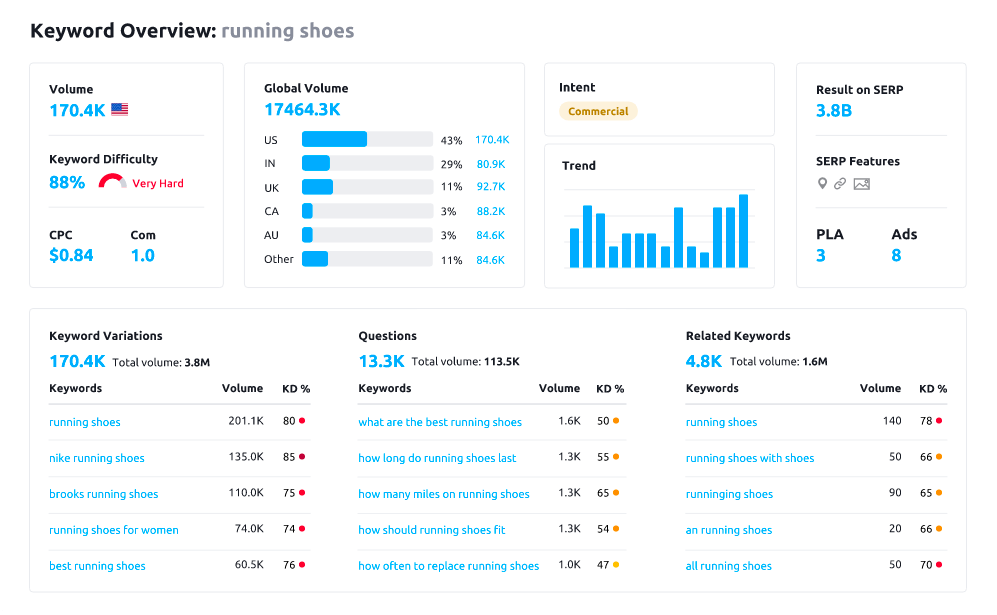
Rank tracking tools
Do you know whether your ecommerce SEO strategy is working? Find out with rank tracking tools like:
Regardless of which tool you’re using, pay close attention to metrics like click-through rate, ranking position, and conversion rate.
If you’re ranking in position #5 for a highly relevant keyword, prioritize refreshing the content on that page.
Just a few minor tweaks could bump you up several positions.
“Using SEO tools like Rank Tracker by Ahrefs helps us monitor the progress of the keywords we employ in the content on our website. But we can also study the SERP position history of our competitors and the popular keywords for which they rank.”
— Jas Banwait Gill, growth manager at SwagMagic
SEO audit tools
An SEO audit is a regular checkup of your ecommerce website.
It runs parallel to your technical SEO strategy, giving information about the architecture, content, and user experience on your website.
Popular site audit tools to assess your technical SEO strategy are:
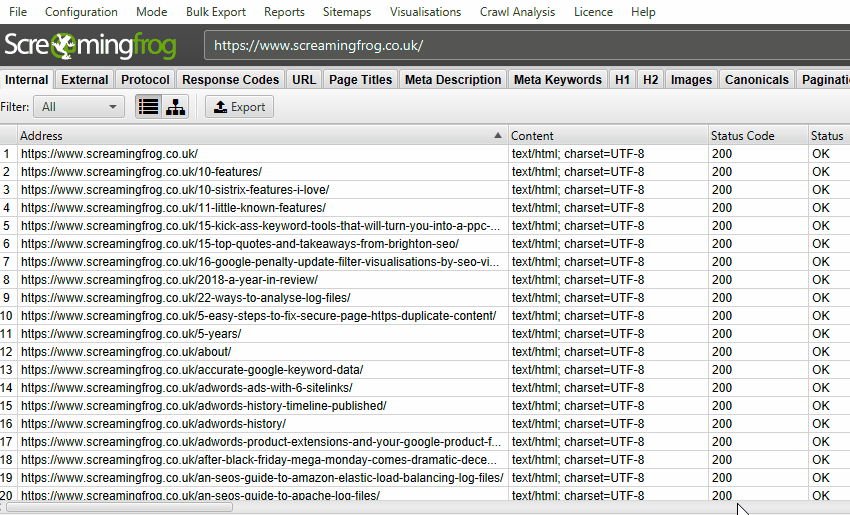
Drive more organic traffic toward your ecommerce store
Regardless of what you sell through your ecommerce business, one thing’s for sure: people are using search engines to discover it.
Ecommerce SEO might sound convoluted, but the basics boil down to five components: finding the right keywords, producing high-quality content, optimizing your site structure, building links, and providing a positive user experience.
Use the best practices we’ve shared to see big SEO wins with minimal resources.
You’ll build a powerful moat around your ecommerce website, driving traffic through organic search on autopilot.
#cta-visual-pb#<cta-title>Build a better store in less time<cta-title>Drive more organic traffic and boost conversions by using Shogun Page Builder to quickly create store content optimized for search and UX.Start building for free

Elise Dopson
Elise Dopson is a freelance writer for B2B commerce and martech companies. When she's not writing, you'll find her in the Peak Freelance community or on Twitter.



